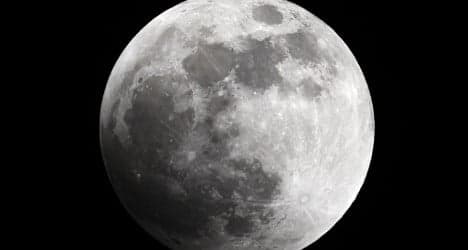Where to witness the ‘supermoon’ in Switzerland

Skywatchers should head above the clouds on Monday evening to see the ‘supermoon’ at its best, according to a Swiss meteorologist.
With clouds covering much of the country, the weather is hardly ideal for catching a glimpse of the moon, which will appear bigger than it has done since 1948.
Supermoons occur when the moon, which orbits the Earth in an elliptical shape, is closest to our planet. On Monday the moon will be closer than it has been since 1948 – only 356,509 kilometres away – and will also be full.
The moon could appear up to 14 percent bigger and 30 percent brighter.
Early-birds could have seen the supermoon on Monday morning between 6.45am and 7am, but only above 1,600m altitude, meteorologist Ludwig Zgraggen told news agency ATS.
There will another chance in the early evening, when the moon rises between 5.15pm and 5.30pm, he said.
Generally the moon appears bigger when it is low in the sky.
But city-dwellers may miss out this time. The weather will be most favourable above 1,500m altitude in the Jura, Valais, Graubünden and on the south side of the Alps, said Zgraggen.
And if you aren't lucky enough to catch a glimpse, you'll have a long wait. The next time the moon is expected to be this close to the Earth is in 2034.

Image: MeteoSuisse
Comments
See Also
With clouds covering much of the country, the weather is hardly ideal for catching a glimpse of the moon, which will appear bigger than it has done since 1948.
Supermoons occur when the moon, which orbits the Earth in an elliptical shape, is closest to our planet. On Monday the moon will be closer than it has been since 1948 – only 356,509 kilometres away – and will also be full.
The moon could appear up to 14 percent bigger and 30 percent brighter.
Early-birds could have seen the supermoon on Monday morning between 6.45am and 7am, but only above 1,600m altitude, meteorologist Ludwig Zgraggen told news agency ATS.
There will another chance in the early evening, when the moon rises between 5.15pm and 5.30pm, he said.
Generally the moon appears bigger when it is low in the sky.
But city-dwellers may miss out this time. The weather will be most favourable above 1,500m altitude in the Jura, Valais, Graubünden and on the south side of the Alps, said Zgraggen.
And if you aren't lucky enough to catch a glimpse, you'll have a long wait. The next time the moon is expected to be this close to the Earth is in 2034.

Image: MeteoSuisse
Join the conversation in our comments section below. Share your own views and experience and if you have a question or suggestion for our journalists then email us at [email protected].
Please keep comments civil, constructive and on topic – and make sure to read our terms of use before getting involved.
Please log in here to leave a comment.